Typically, we learn history from books. Our high schools teachers assign us reading and we turn to the pages, reading the written words of our history and of others’ histories. We learn history through lectures, maybe through stories from our grandparents, even fictional books. Reading is one of the most effective methods of learning: not only for history, but for anything that is to be learned.
But what if you could learn about history by exploration rather than reading pages upon pages? What if you could walk the streets and learn the history that paved the sidewalks? What if you could run your hands across historic plaques and artifacts, learning by living and experiencing?
This is exactly where I found myself in Adamson Square: standing amongst a living history.
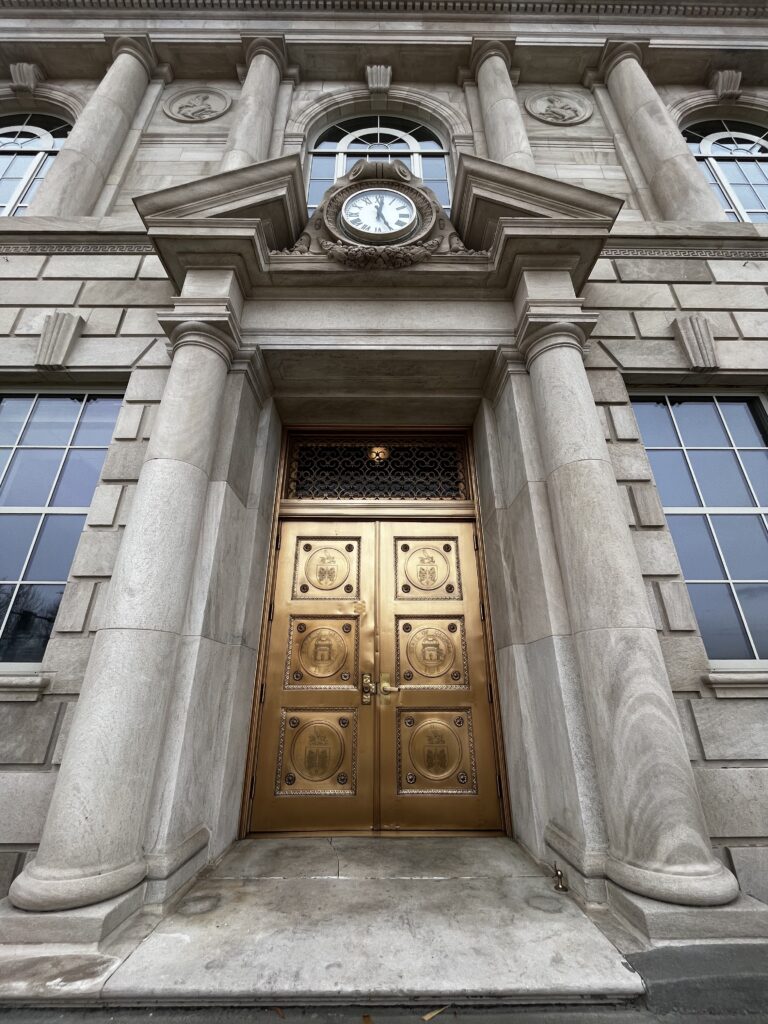
I was hesitant to include a history section in my feature article. Including it meant I was running the risk of turning the page into a Wikipedia article, simply spewing history that can be found at any corner of the internet. However, Adamson Square taught its history in such a strange yet interesting way. If I had learned its history from a textbook or a website, odds are I would not have included this portion at all. But since I learned the history while walking around the square itself, I believed this experience was unique enough to differentiate itself from a simple retelling of Carrollton’s history.
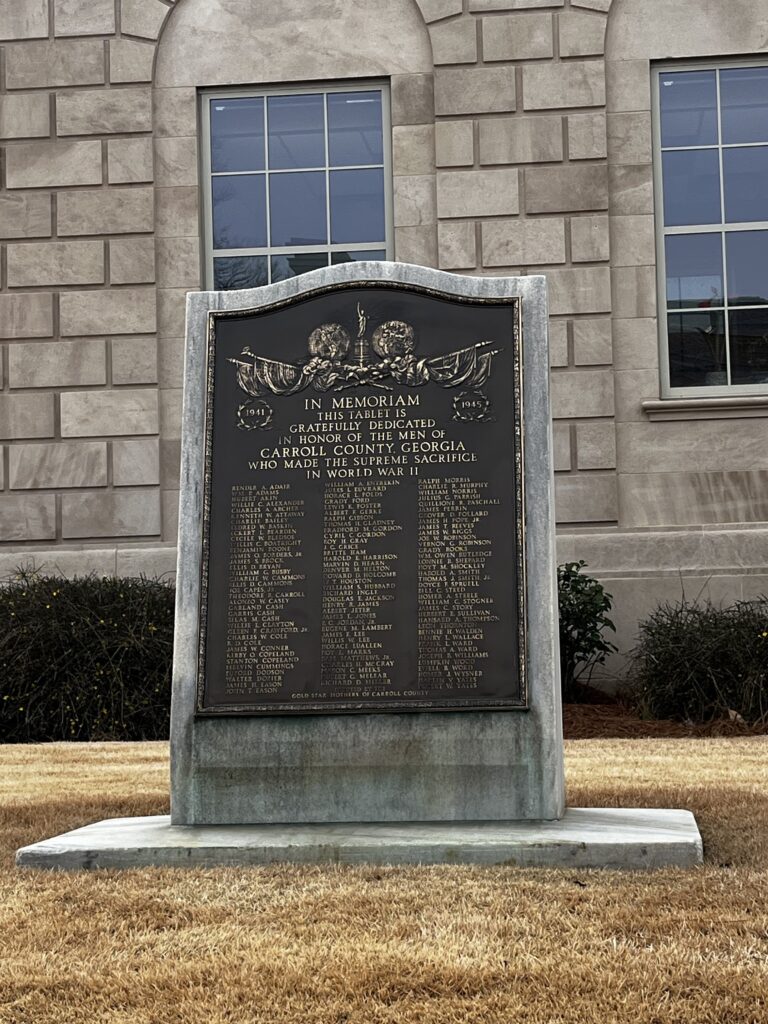
Carrollton itself is a rather old town. This is evident just by walking the streets, no further research needed. The buildings themselves permeate a feeling of respect, a sense of reverence that is only found when exploring old, important buildings. Perhaps not as strong a feeling as somewhere like the White House would give off, but the feeling is comparable nonetheless. The streets were lush with old (but well-kept) government buildings and churches, each beautiful in their own way.
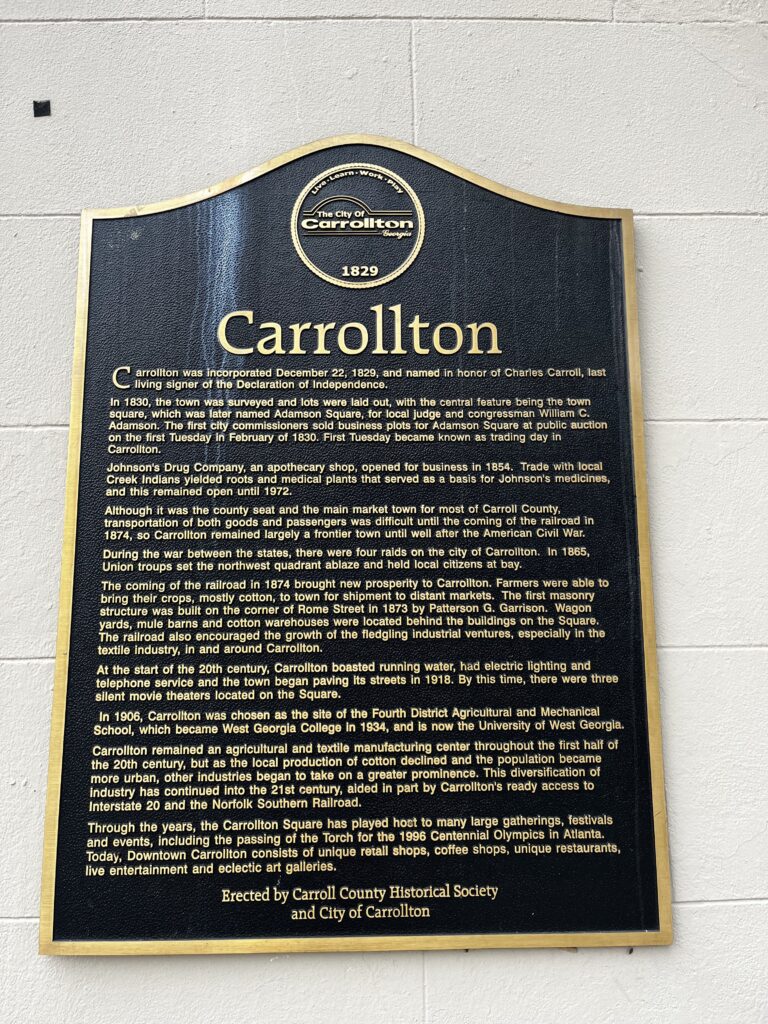
Once I was no longer on the outskirts and had reached the actual Adamson Square, it was my surprise to find even accessible history. Attached to the side of a building, I found another plaque that briefly went into the history of Carrollton and Adamson Square. Upon investigating, I discovered that Carrollton was named after Charles Carroll (who at the time of naming was the only living signer of the Declaration of Independence). On this plaque, I also learned about old local businesses, such as Johnson’s Drug Company and the Main Market. This plaque also discussed Carrollton’s place during the Civil War in which it was actually burned by the Union at one point. Later on, Carrollton became an important agricultural area.
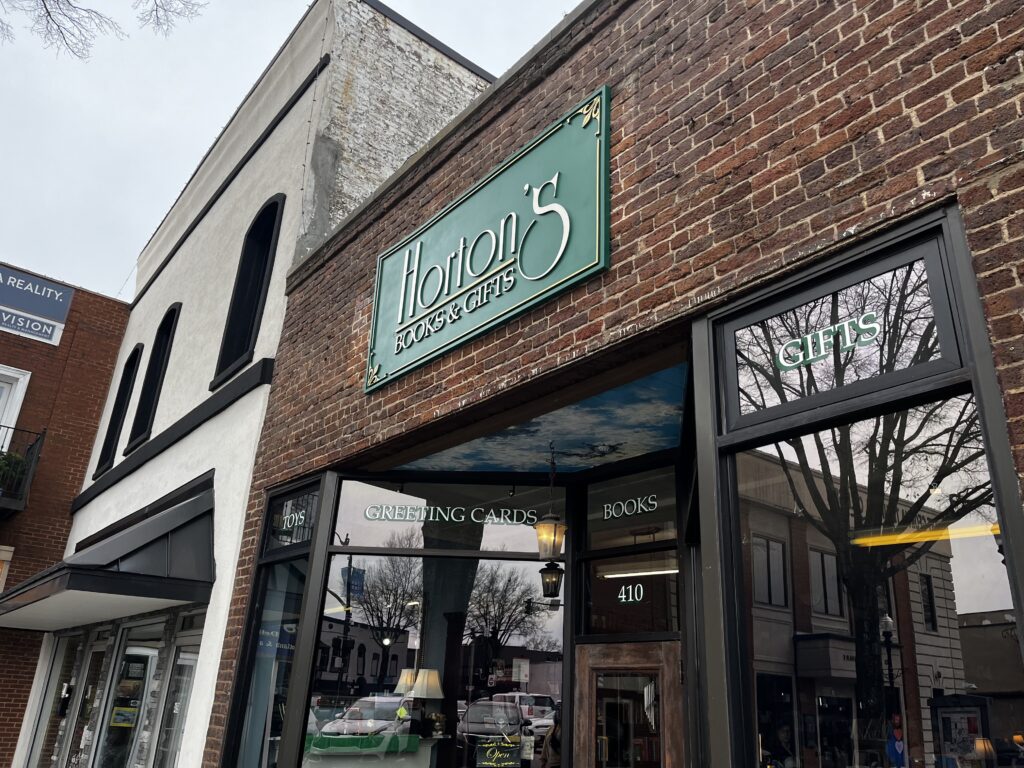
As I continued to explore Adamson Square, I eventually came across a bookstore. This was different than the Underground Bookstore I found. Rather, this one turned out to be a particularly important place. Horton’s Books & Gifts is a homey little bookstore that seemed fairly normal upon first impression. Walking in, however, definitely gives a new impression.
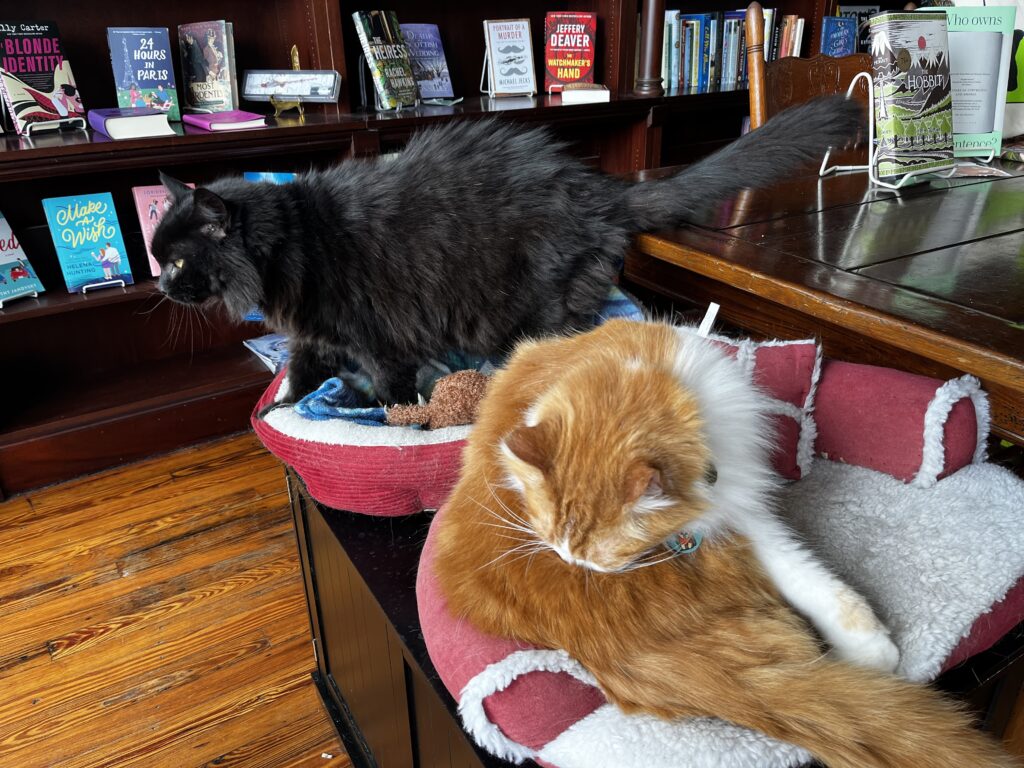
Immediately upon entering, I was met with some incredibly friendly cats. Unfortunately, I did not get to learn their names, but I did learn that they belonged to the current owner. As I continued to walk around the store, I found many interesting historical artifacts. Some of my finds included a vintage sewing machine, items from the Atlanta Olympics, authentic newspapers from the 50s and beyond, as well as many other things.
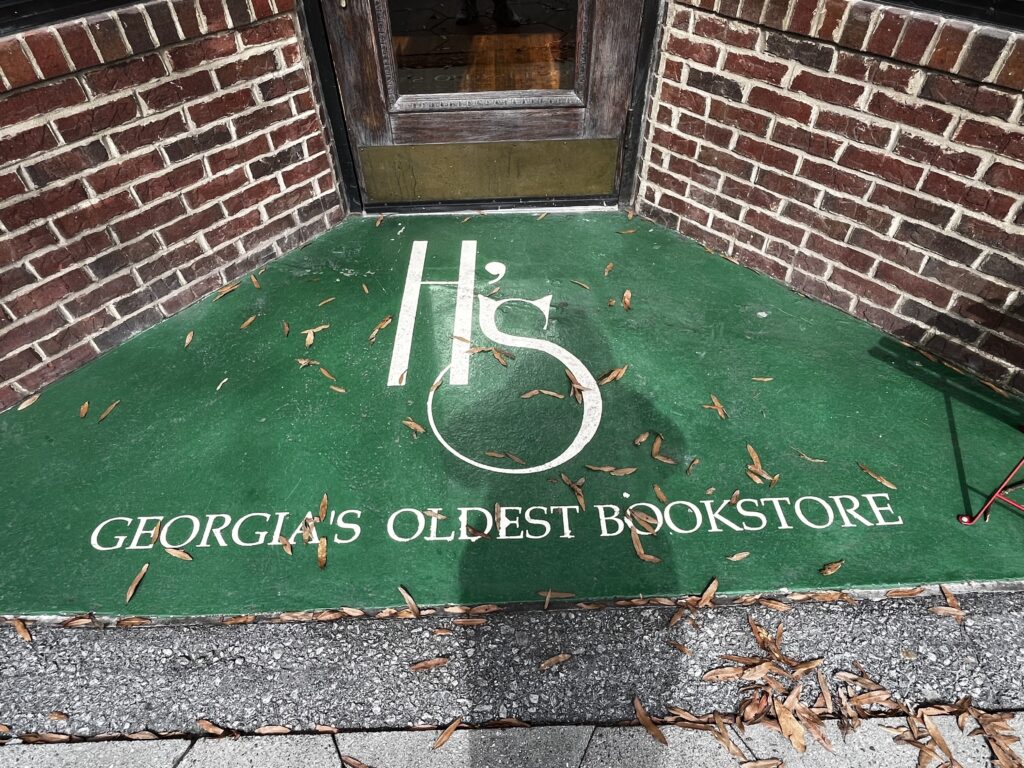
I wasn’t sure why this bookstore had so many historical artifacts. I knew it had books AND gifts, but vintage and authentic historical pieces? It left me just a bit confused, and I wanted to know why. Fortunately, I get a chance to speak to the current owner, and to my surprise, I learned the Horton’s Books & Gifts is the oldest bookstore in Georgia. Once I left, I happened to look down, and there it was. How had I missed that? The sign on the ground told you from the start that it was the oldest bookstore, I just hadn’t known where to look.
This city is lush with history. I could have researched the history before visiting, but I’m actually glad that I didn’t. If I had, I wouldn’t have had the opportunity to learn the history myself simply by exploring. This, in my opinion, made the visit all the more impactful.